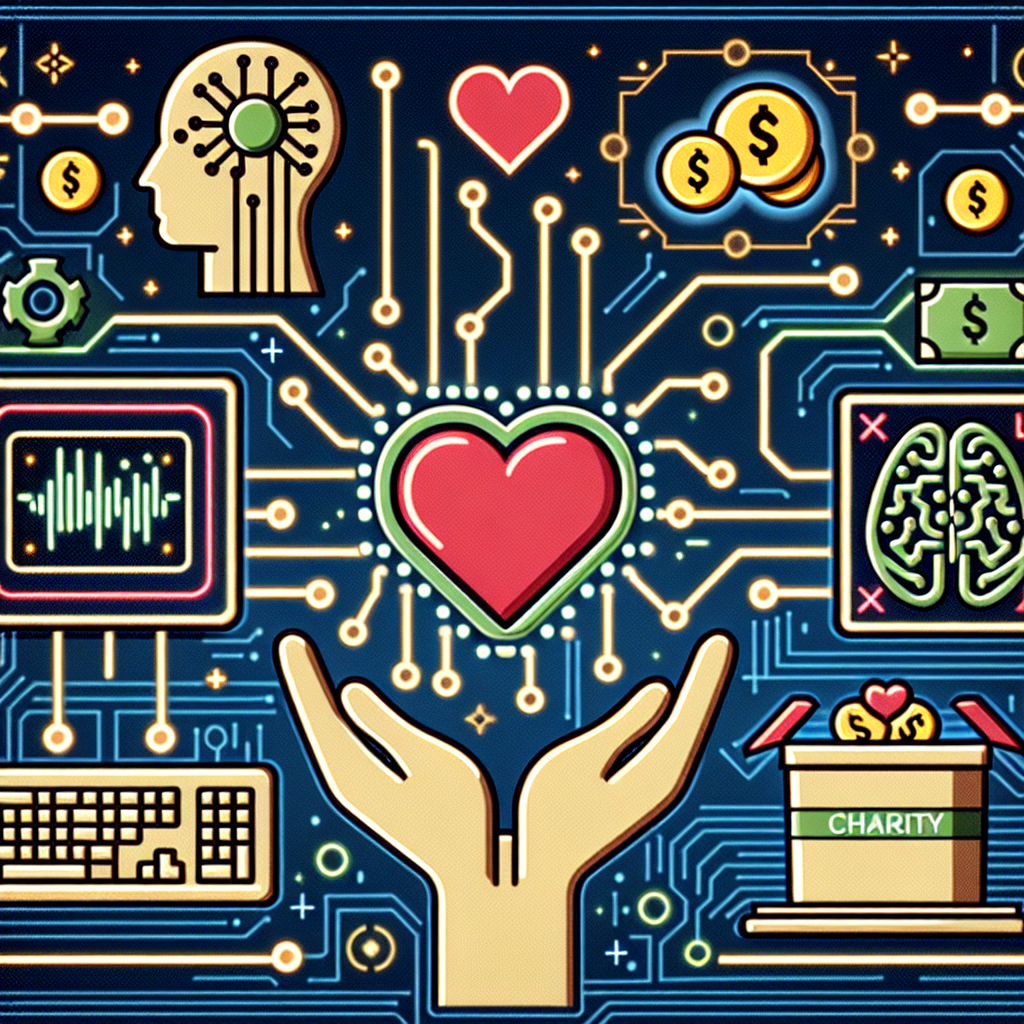Introduction
Artificial Intelligence (AI) has been making significant strides in various sectors, including philanthropy. AI has the potential to revolutionize the way organizations and individuals approach philanthropy, making it more efficient, effective, and impactful. In this article, we will provide a comprehensive overview of the impact of AI on philanthropy, discussing its benefits, challenges, and potential future developments.
Benefits of AI in Philanthropy
1. Data Analysis and Decision Making: AI can analyze vast amounts of data to identify trends, patterns, and insights that can inform strategic decision-making in philanthropy. This can help organizations target their resources more effectively, identify areas of need, and measure the impact of their interventions.
2. Personalization: AI can help philanthropic organizations personalize their interactions with donors, volunteers, and beneficiaries. By analyzing data on individual preferences, behaviors, and needs, organizations can tailor their communications and services to better meet the unique needs of each stakeholder.
3. Automation: AI can automate repetitive tasks, such as data entry, reporting, and administrative work, freeing up staff time to focus on more strategic and creative activities. This can help organizations operate more efficiently and reduce costs.
4. Predictive Analytics: AI can use predictive analytics to forecast future trends, identify potential risks, and optimize resource allocation. This can help organizations anticipate and respond to emerging challenges before they escalate.
Challenges of AI in Philanthropy
1. Data Privacy and Security: The use of AI in philanthropy raises concerns about data privacy and security. Organizations must ensure that they have robust data protection policies in place to safeguard sensitive information and comply with regulations such as the General Data Protection Regulation (GDPR).
2. Bias and Fairness: AI algorithms can perpetuate biases and inequalities if they are not designed and implemented carefully. Organizations must be mindful of the potential for bias in AI systems and take steps to mitigate it, such as using diverse datasets and testing for bias regularly.
3. Ethical Considerations: The use of AI in philanthropy raises ethical questions about the potential impact on human dignity, autonomy, and agency. Organizations must consider the ethical implications of their AI projects and ensure that they align with their values and principles.
4. Skills Gap: Implementing AI in philanthropy requires specialized skills and expertise that may be lacking in the sector. Organizations must invest in training and development to build capacity and ensure that staff have the necessary skills to use AI effectively.
Future Developments in AI and Philanthropy
1. Collaborative Partnerships: As AI technology continues to evolve, we can expect to see more collaborations between philanthropic organizations, technology companies, and research institutions to develop innovative solutions to complex social challenges.
2. Impact Measurement: AI can help philanthropic organizations improve their impact measurement practices by providing real-time data on program outcomes, beneficiary feedback, and performance indicators. This can enable organizations to make data-driven decisions and demonstrate their impact more effectively.
3. Personalized Giving: AI can enable donors to personalize their giving experiences by matching them with causes that align with their values, interests, and preferences. This can help organizations attract and retain donors by providing a more engaging and rewarding philanthropic experience.
4. Ethical AI: As the use of AI in philanthropy grows, there will be an increased focus on ensuring that AI systems are developed and deployed ethically. Organizations will need to adopt ethical frameworks and guidelines to guide their AI projects and ensure that they are aligned with their mission and values.
FAQs
Q: What are some examples of AI applications in philanthropy?
A: Some examples of AI applications in philanthropy include predictive analytics for identifying at-risk populations, chatbots for providing information and support to beneficiaries, and natural language processing for analyzing donor feedback and sentiment.
Q: How can organizations ensure that AI projects are ethical?
A: Organizations can ensure that their AI projects are ethical by adopting ethical frameworks and guidelines, conducting regular ethics reviews, engaging stakeholders in decision-making, and being transparent about their AI systems and algorithms.
Q: What are some of the key challenges of using AI in philanthropy?
A: Some of the key challenges of using AI in philanthropy include data privacy and security concerns, bias and fairness issues, ethical considerations, and the skills gap in the sector.
Q: How can organizations address bias in AI systems?
A: Organizations can address bias in AI systems by using diverse datasets, testing for bias regularly, involving diverse stakeholders in the development process, and implementing bias mitigation techniques such as algorithmic transparency and fairness.
Conclusion
AI has the potential to transform philanthropy by improving data analysis, personalizing interactions, automating tasks, and enabling predictive analytics. While there are challenges to overcome, such as data privacy, bias, and ethical considerations, the benefits of using AI in philanthropy are significant. As AI technology continues to evolve, we can expect to see more innovative applications and collaborations that will enhance the impact of philanthropic organizations and address complex social challenges. By embracing AI and adopting ethical guidelines, philanthropic organizations can harness the power of technology to drive positive change and make a lasting difference in the world.

